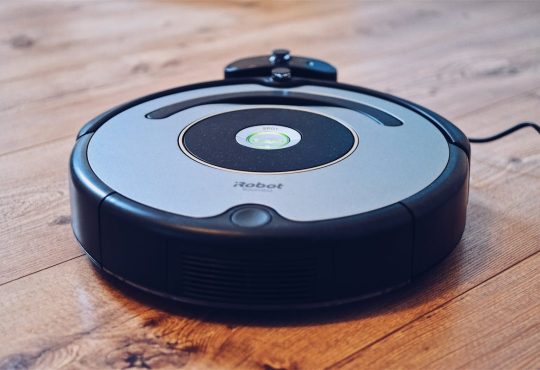Bringing nature indoors has long been recognized as a way to enhance the ambiance and energy of any space. Whether you’re looking to improve the aesthetic appeal, purify the air, or simply introduce a calming natural element into your home, choosing the right plants for indoor display can transform your living environment. In this article, we will dive deep into the best plants for indoor display, how to care for them, and how they can benefit your overall well-being.
Introduction
In recent years, indoor plants have surged in popularity, not just as a design trend but as a lifestyle choice. With the fast pace of modern life and increasing urbanization, indoor plants offer a way to reconnect with nature, even in small apartments or homes with limited outdoor space. Beyond their aesthetic value, plants for indoor display can improve the air quality, reduce stress levels, and create a sense of tranquility.
This article will explore a variety of indoor plants that are ideal for display purposes, offering both beauty and functionality. Whether you are a seasoned plant enthusiast or a beginner, the right indoor plant can elevate your living space, create a soothing atmosphere, and even contribute to your overall health.
Benefits of Indoor Plants
Aesthetic Appeal
One of the primary reasons people choose plants for indoor display is for their aesthetic value. Plants add texture, color, and life to any room, softening harsh lines and creating a focal point. From tall, leafy trees to small, potted succulents, the variety of plants available means that you can find something to suit every style and room.
Improving Air Quality
Many indoor plants have air-purifying properties. Plants like the Spider Plant (Chlorophytum comosum), Peace Lily (Spathiphyllum), and Boston Fern (Nephrolepis exaltata) can filter toxins from the air, providing cleaner air to breathe. The process of photosynthesis, where plants convert carbon dioxide into oxygen, further enhances indoor air quality.
Psychological Benefits
Plants for indoor display can also improve mental health. Numerous studies have shown that interacting with plants can reduce stress levels, improve mood, and enhance concentration. Just having greenery in your peripheral vision can make a space feel more calming and restorative.
Humidity Control
Many indoor plants naturally release moisture into the air through a process called transpiration. This can be beneficial in dry environments, helping to maintain a comfortable level of humidity and reducing the need for artificial humidifiers.
Choosing the Right Plants for Indoor Display
When selecting plants for indoor display, it is essential to consider the following factors:
- Lighting conditions: Different plants have varying light requirements. Some thrive in low light, while others need bright, indirect sunlight. Assess the lighting in each room to match the plant’s needs.
- Size: Indoor plants come in a range of sizes. Consider how much space you have available and choose plants that will fit comfortably in your environment without overcrowding the area.
- Care requirements: Some plants are low maintenance and ideal for beginners, while others may require more frequent care and attention. Choose plants that align with your ability to provide regular care, watering, and maintenance.
Top Plants for Indoor Display
Low Light Plants
If your home or certain rooms don’t receive much natural light, you can still enjoy the beauty of indoor plants by choosing varieties that thrive in low light conditions. Here are some popular low-light plants for indoor display:
- Snake Plant (Sansevieria trifasciata)
The snake plant is a hardy, low-maintenance plant that can tolerate a range of lighting conditions, including low light. Its upright, sword-like leaves make it a striking choice for any room. - ZZ Plant (Zamioculcas zamiifolia)
Another tough plant, the ZZ plant is known for its shiny, deep green leaves and ability to thrive in low light. It is also drought-tolerant, making it ideal for those who may forget to water occasionally. - Cast Iron Plant (Aspidistra elatior)
True to its name, the cast iron plant is nearly indestructible. It tolerates low light, neglect, and low humidity, making it perfect for dim corners or spaces that don’t get much attention.
Medium Light Plants
Medium light plants need indirect sunlight, meaning they thrive when placed near a window that filters light or in a room with consistent but not harsh sunlight. Here are a few popular options:
- Spider Plant (Chlorophytum comosum)
This classic plant is great for hanging baskets or placing on a shelf where its long, arching leaves can spill over the sides. Spider plants are known for their air-purifying properties and are easy to care for. - Peace Lily (Spathiphyllum)
With its glossy leaves and elegant white flowers, the peace lily is a stunning addition to any indoor display. It prefers medium light and is known for removing toxins from the air. - Philodendron (Philodendron spp.)
Philodendrons are versatile plants that can grow in a range of lighting conditions. Their heart-shaped leaves add a touch of tropical flair to any space, and they’re relatively easy to care for.
Bright Light Plants
If you have a space with lots of bright, indirect sunlight, such as near a large window or in a sunroom, the following plants will thrive:
- Fiddle Leaf Fig (Ficus lyrata)
The fiddle leaf fig is a trendy plant with large, glossy leaves that make a bold statement in any room. While it requires bright light, it can be somewhat finicky, needing consistent care and attention to thrive. - Bird of Paradise (Strelitzia reginae)
This exotic plant brings a tropical vibe to indoor spaces. Its large leaves and potential for stunning orange and blue flowers make it a centerpiece in bright, well-lit areas. - Aloe Vera (Aloe barbadensis miller)
Aloe vera is a succulent known for its medicinal properties, particularly the soothing gel within its leaves. It prefers bright light and minimal watering, making it an excellent choice for sunny windowsills.
Unique and Exotic Plants for Indoor Display
For those looking to go beyond the traditional, there are several unique and exotic plants for indoor display that can become conversation pieces in any home:
- Monstera Deliciosa
Known for its iconic split leaves, Monstera is a popular houseplant that can grow large and imposing. It thrives in bright, indirect light and can add a tropical feel to your home. - Air Plants (Tillandsia)
Air plants are fascinating because they don’t require soil to grow. Instead, they absorb moisture and nutrients from the air. They can be displayed creatively, such as in hanging terrariums or mounted on driftwood. - Staghorn Fern (Platycerium)
This unusual plant resembles deer antlers and is often mounted on wooden boards or hung on walls. It thrives in bright, indirect light and high humidity, making it an interesting and artistic addition to any indoor plant collection.
Creating Indoor Plant Displays: Design and Placement Tips
To make the most of your indoor plants, consider how they are displayed within your home. Here are some tips for creating eye-catching indoor plant displays:
- Vary Heights and Textures
Combine plants of different sizes and leaf shapes to create visual interest. Tall plants like fiddle leaf figs can be paired with shorter, bushier plants, and trailing plants like pothos can add a cascading effect. - Use Stylish Containers
The pot or container you choose for your plant is just as important as the plant itself. Opt for decorative pots that complement your home’s decor. Terra cotta pots offer a rustic feel, while sleek ceramic pots can add a modern touch. - Create a Plant Shelf or Stand
Use a dedicated plant shelf or stand to group multiple plants together. This not only maximizes space but also creates a focal point in the room. You can use floating shelves, tiered plant stands, or even bookshelves to display your plants. - Utilize Hanging Plants
Hanging plants are a great way to add greenery without taking up floor or counter space. Plants like spider plants, pothos, and ferns work well in hanging baskets or macramé holders.
Caring for Indoor Plants
Caring for plants for indoor display involves understanding their specific needs, including light, water, and humidity levels. While each plant has unique requirements, here are some general tips for indoor plant care:
- Watering
Most indoor plants prefer to dry out slightly between waterings. Overwatering is a common issue, so always check the soil before watering. Use well-draining soil and pots with drainage holes to prevent water from accumulating at the bottom. - Lighting
Ensure that each plant receives the correct amount of light based on its needs. If a plant isn’t thriving, consider moving it to a different location with more or less light. - Humidity
Many indoor plants, especially tropical varieties, thrive in high humidity environments. Consider using a humidifier or misting the plants regularly, especially during winter months when indoor air tends to be drier. - Fertilizing
Feed your indoor plants with a balanced, water-soluble fertilizer during the growing season (spring and summer). Avoid over-fertilizing, as this can cause more harm than good.
Troubleshooting Common Indoor Plant Issues
Despite your best efforts, indoor plants may encounter issues such as yellowing leaves, wilting, or pest infestations. Here are some common problems and solutions:
- Yellowing Leaves
This can be a sign of overwatering, underwatering, or inadequate light. Check the soil moisture and adjust your watering schedule. If the plant isn’t getting enough light, move it to a brighter location. - Wilting
Wilting can be caused by both under and overwatering. If the soil is dry, give the plant a good soak. If it’s soggy, allow the soil to dry out and consider repotting in fresh, well-draining soil. - Pest Infestations
Common indoor plant pests include spider mites, mealybugs, and aphids. Regularly inspect your plants and treat any infestations with insecticidal soap or neem oil.
Enhancing The Aesthetic Appeal of Your Home
Plants for indoor display offer a wealth of benefits, from improving air quality to enhancing the aesthetic appeal of your home. With so many options available, there’s a plant for every space, light condition, and level of care. Whether you opt for easy-care succulents or striking statement plants, incorporating indoor plants into your living spaces will bring beauty, health, and tranquility into your home.
By choosing the right plants and providing the proper care, you can create an indoor oasis that reflects your style and promotes well-being. Whether you are a beginner or an experienced plant parent, the world of indoor plants offers endless opportunities to enrich your living environment with the beauty of nature.





